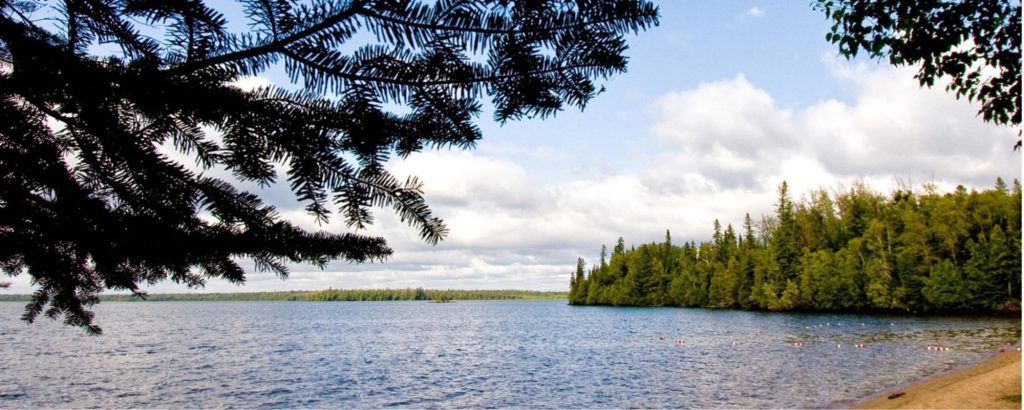
René Brunelle Provincial Park is a northern gem!
It lies along the northeastern shores of Remi Lake, one of the largest in the region of Northern Ontario known as the “Clay Belt”.
The Clay Belt is an ancient glacial lakebed with fertile soils and extensive forests dotted with farms. It’s a landscape of forests and rivers, with few lakes, so a really big lake like Remi is rare in this area.
The park contains a swath of the Boreal Forest, a mysterious and primeval looking forest with cool conifers, trembling aspen and birch, and lots of neat plants on the forest floor.
Check out these five reasons to visit René Brunelle:
1. Get hooked on Remi Lake!
Remi Lake is big – more than 8 km long and more than 5 km wide, and full of fish! And trust us: the fishing is good.
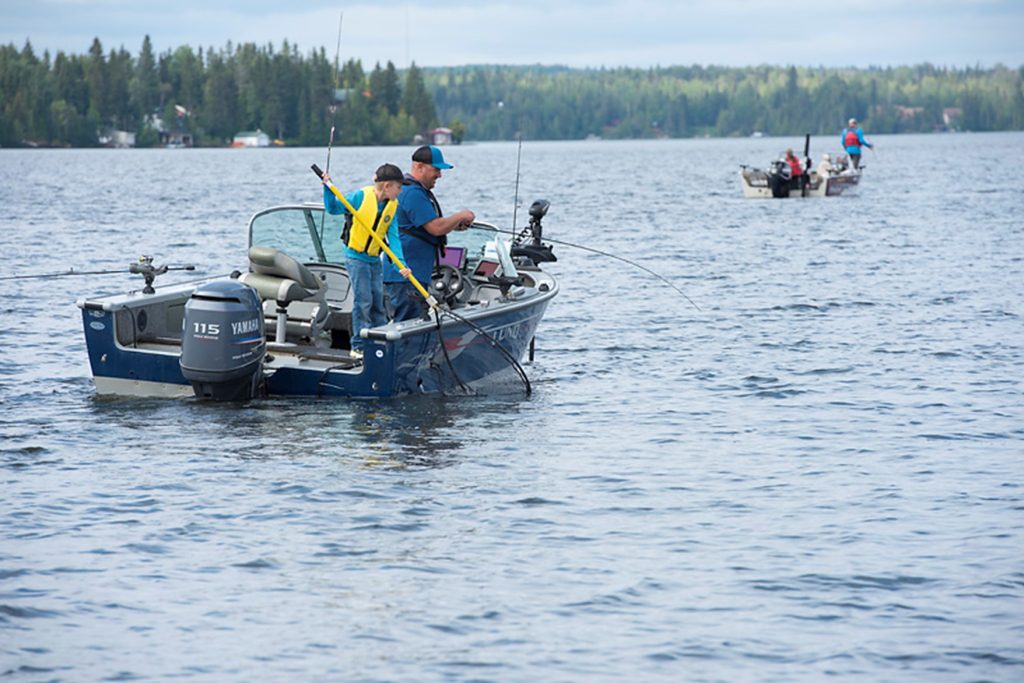
Anglers fish for Walleye, Northern Pike, and unusually for northeastern Ontario, Smallmouth Bass.
The park has docking space, a fish cleaning station, and rents motorboats if you didn’t bring one with you.
If fishing isn’t your thing, the park rents canoes, kayaks, paddle boats, and stand-up paddleboards. Paddlers love following the undeveloped northeast shore of the lake that lies within the park.
2. You’ll be a happy camper
This park really goes all out to provide a variety of camping opportunities!
It has a mix of 59 electrical sites and 42 non-electrical sites, found in two campgrounds: East Bay, and the smaller Owl’s Nest campgrounds. Many of these sites are quite secluded and tucked into the forest.
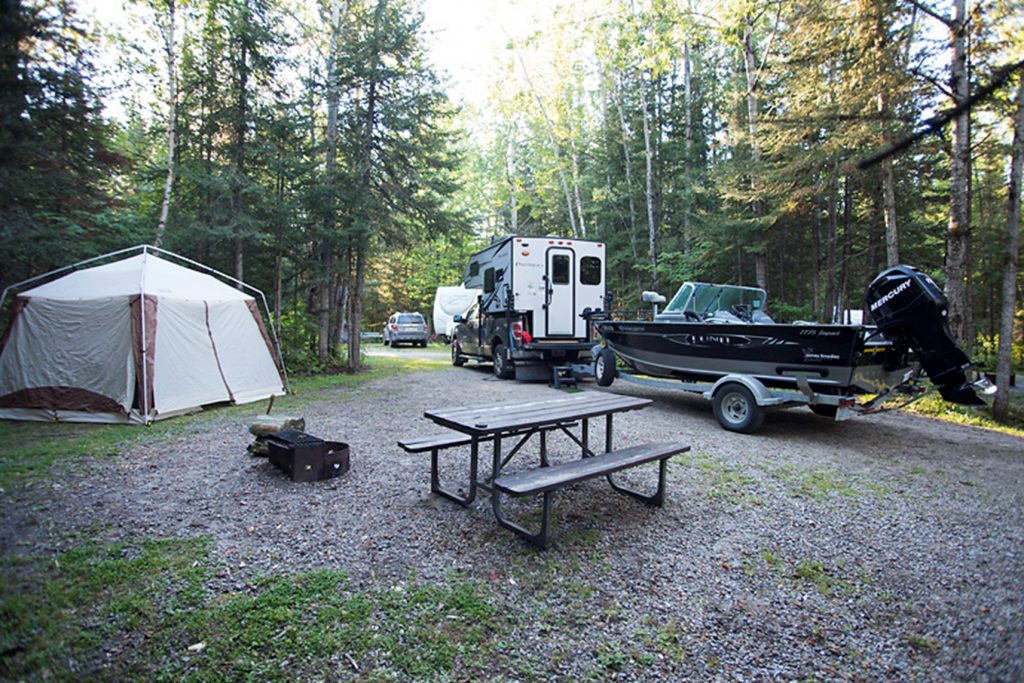
East Bay has a comfort station with showers, flush toilets and sinks, and a laundromat. Campers from other campgrounds can park at an easy-access parking area just off the main park road.
Five walk-in campsites are available with their own waterfront views adjacent to the beach known as the “Campers Beach”. Campers without trailers or RVs find these sites are perfect for tenting, with paddlers pulling their canoes and kayaks right up to their site!
One rustic cabin is located just north of the Campers Beach. It’s very popular and is usually reserved quite steadily through the summer and into the fall. The cabin is reservable all the way through the Thanksgiving weekend, a few weeks after the rest of the campground closes.
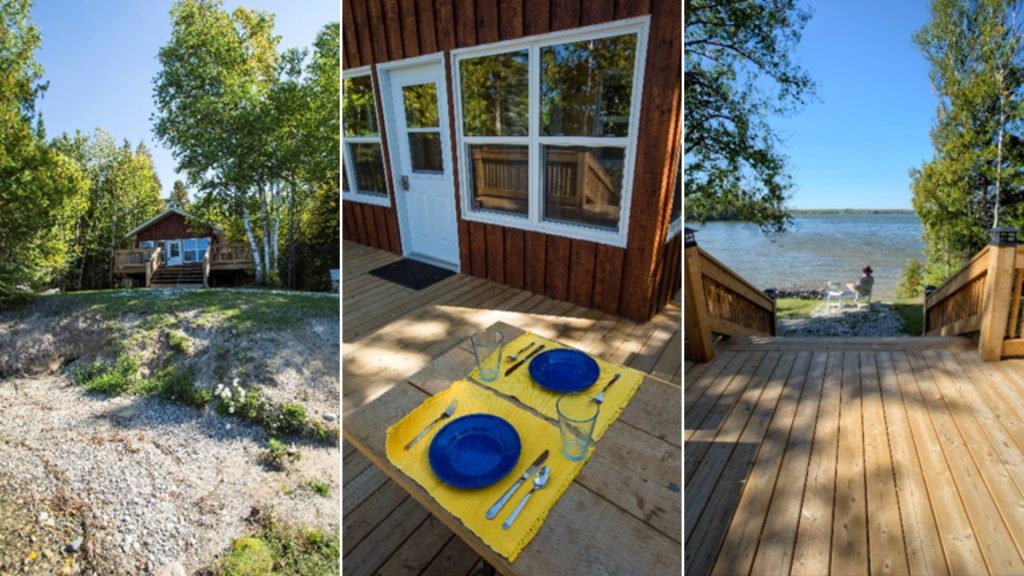
Finally, the park provides larger groups with an opportunity to camp together in a large, secluded spot in the north part of the park near Phipps Point day use area.
One of the best group campsites in any park, this site is beautiful, with its own beach that faces the undeveloped and wild north shore of the park and Remi Lake. The site is separate from the main campground, is well landscaped and slopes down gently to the sand at the water’s edge. It can accommodate 20 trailers or more and is suitable for weddings, reunions and work retreats.
The Phipps Point day use area is one of the park’s lesser-known gems. It’s a beautiful spot located at the northern end of the developed part of the park with two sand beaches.
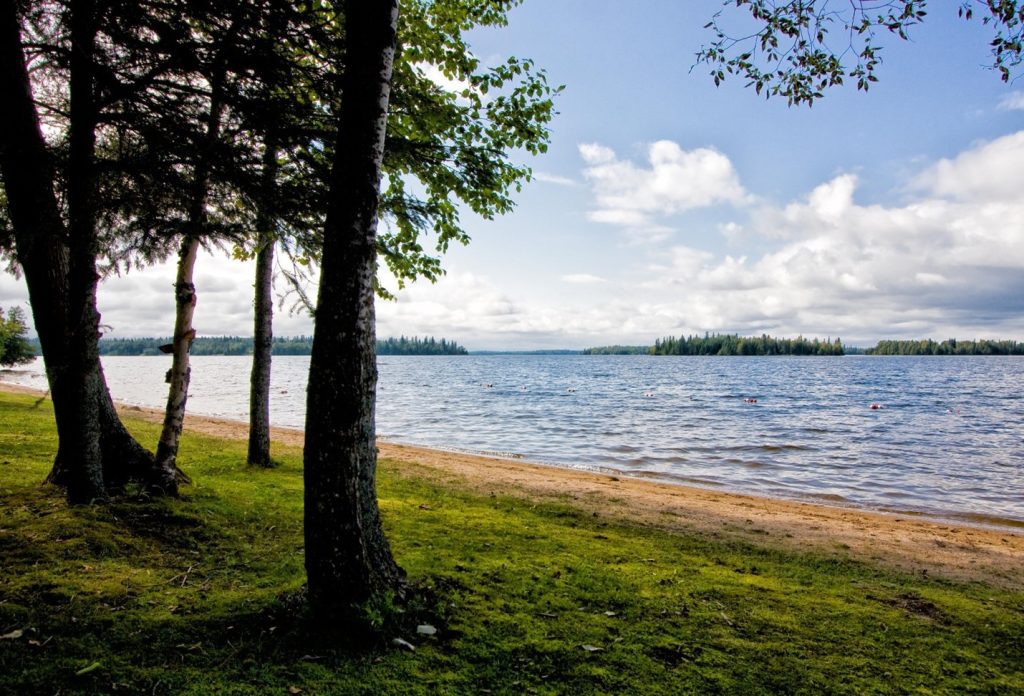
Along with the two sand beaches just steps from the large rambling picnic grounds, there’s also a large playground, a sand volleyball court, lots of picnic tables, and even a reservable picnic shelter for family gatherings and company picnics.
3. A fiery history
In 1916, a forest fire swept across part of the Clay Belt near Timmins, becoming the deadliest forest fire in Canadian history to date.
Called The Matheson Fire, this forest fire began as several small fires that had been set to clear land for farms near the mining camps around Timmins. It was a dry, hot summer, and smoke from fires had filled the air for several weeks, so people had no idea that the fires had joined into one huge inferno.
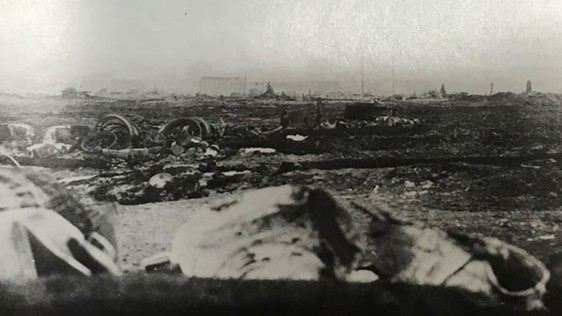
The fire grew and moved east with the prevailing winds, with a front more than 60 kilometres wide. The fire consumed several towns, including Iroquois Falls and Matheson. Some people waded into rivers to escape the fire, while others jumped onto the Temiskaming and Northern Ontario Railway; however, many others were unable to escape. The official count was 233 people who died in the fire.

This was long before the days of waterbombers, spotting aircraft, helicopters, and fire crews. In fact, the terrible tragedy spurred the creation of the Forest Protection Branch of the Department of Lands and Forests, the beginnings of modern forest fire fighting, and the Forest Fires Prevention Act of 1917 in Ontario.
If you hike the La Vigilance Trail near Phipps Point, you’ll find a nice scenic trail and also learn a bit about Remi Lake’s role in the forest fire-fighting story. Interpretive signs along the trail tell the story of floatplanes and their use in the early days of fire spotting and forest fire fighting.
Airplane Island, which you can see from the trail out in the middle of Remi Lake, was a floatplane base. One of the floatplanes stationed on Remi Lake in the 1920s was called “La Vigilance” and was intended to keep watch, spotting smoke and potential forest fires.

La Vigilance was a “flying boat”, or amphibious plane that could take off and land on water, perfect for a northern landscape dotted with lakes like Northern Ontario. In 1922, the pilot and engineer had dropped off some aviation fuel on a remote lake for future use and were returning to Remi Lake when they encountered bad weather.
They set down on a tiny lake north of Remi. Upon taking off and maneuvering on the surface of the small lake, the wingtip caught the water, causing it to crash. The pilot and engineer walked out to safety, but the plane remained in the lake for another 40 years.
~
4. Explore the mysterious Boreal Forest
The Boreal Forest is vast, beautiful, and completely northern.
This unique ecosystem, unlike anything you’ll find in southern Ontario, covers half the province’s land area and stretches around the globe. It’s one of the largest ecosystems in the world and covers more than half of Ontario!
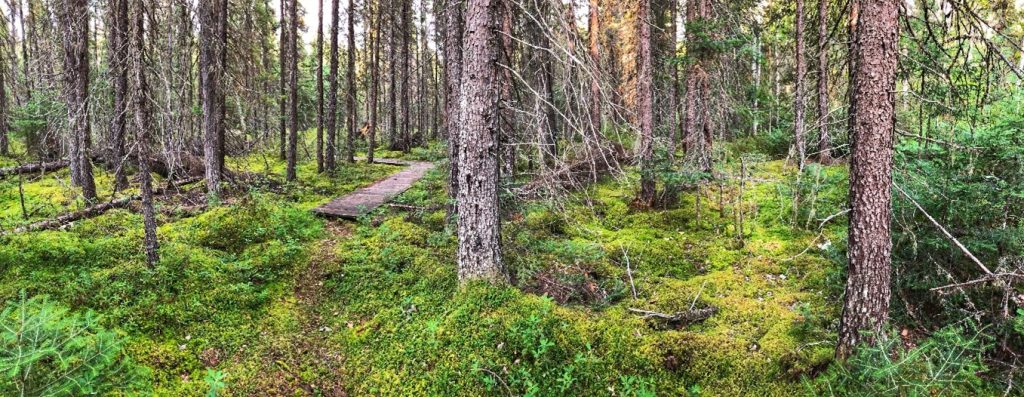
The word “boreal” means northern, so climate is a big factor in how this ecosystem functions and what species of plants and animals live in it. Long and cold winters mean that to survive year-round, you have to be tough.
For plants, it means that there are fewer species in the forest – only those adapted to living in cold climates can make it: Jack Pine, Trembling Aspen, White Birch, Black Spruce, and White Spruce are the main species.
The same goes for many animals – they have to be able to stand the cold winters, so they either hibernate (like frogs and bears), grow thick fur (like lynx, fox, and wolves), or develop other survival strategies.
Birds choose both strategies. Woodpeckers, grouse, owls and the crafty Canada Jay are hardy and stay throughout the winter.
Songbirds like warblers and flycatchers that specialize in eating insects must migrate to warmer climes. Visiting in spring and summer? You’ll be treated to the songs of migratory songbirds! Food is so plentiful that they can raise two and sometimes three broods of chicks. Things are so good here for migratory birds that the Boreal Forest is often called the Songbird Nursery!
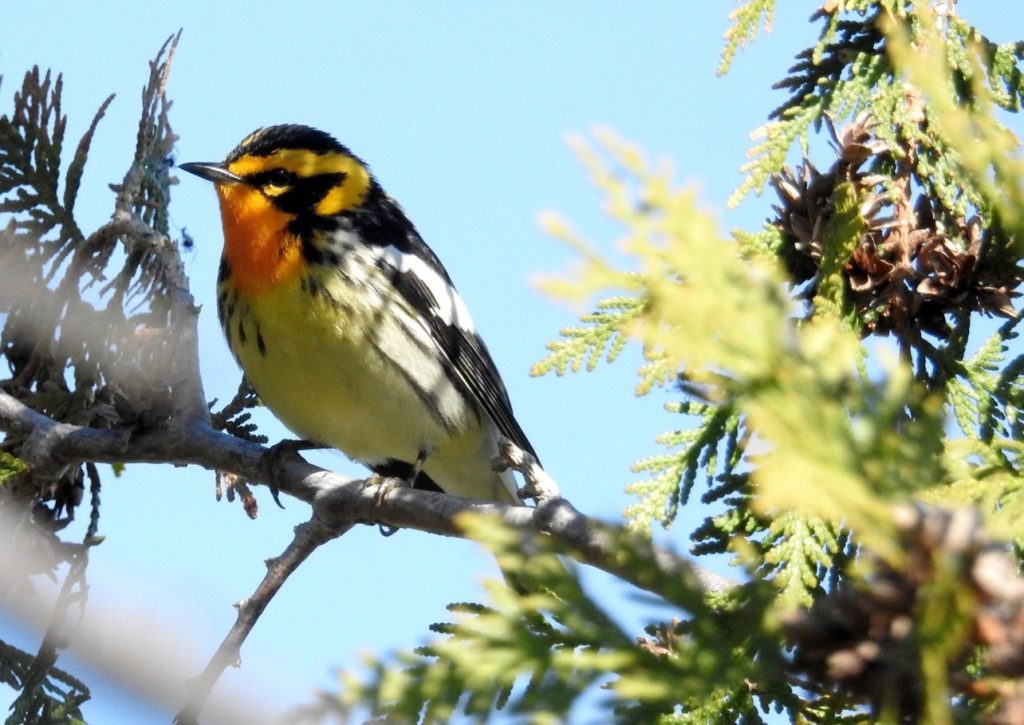
Hike the Spruce Lowland Trail for a sense of the Boreal Forest within the park, which passes through trees typical of this forest. This trail also wanders through a Black Ash stand, which is at the northern edge of its range. Keep an eye open for northern plants and colourful songbirds too!
~
5. Discover the Discovery program!
René Brunelle offers Exploration Stations during the months of July and August.
Led by the park’s Discovery guide, these drop-in programs are often paired with a Discovery Activity Book activity (available for free) and other props and tools to help spark curiosity and exploration.
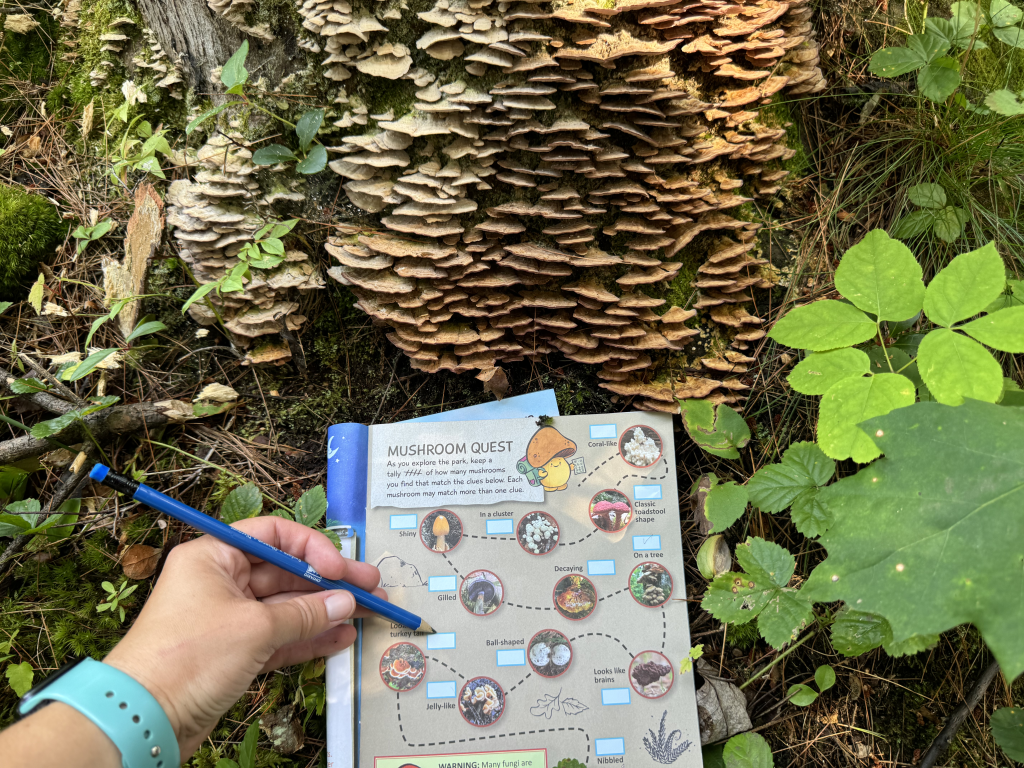
Exploration Stations are designed to get park visitors exploring nature and discovering the park.
These programs are great for families looking to explore the park and find out more about it! But they aren’t just children’s programs – they are designed for all ages, and anyone can participate!
Whether you prefer a spontaneous drop-in experience or a structured guided session, there’s something for everyone.
~
Bonus: take a selfie with a UFO!
As you drive towards René Brunelle Provincial Park, you’ll turn off the Trans-Canada Highway to the little town of Moonbeam.
Aside from the town being mentioned in a Tragically Hip tune (or perhaps because of it?!), it’s also notable for its Flying Saucer.
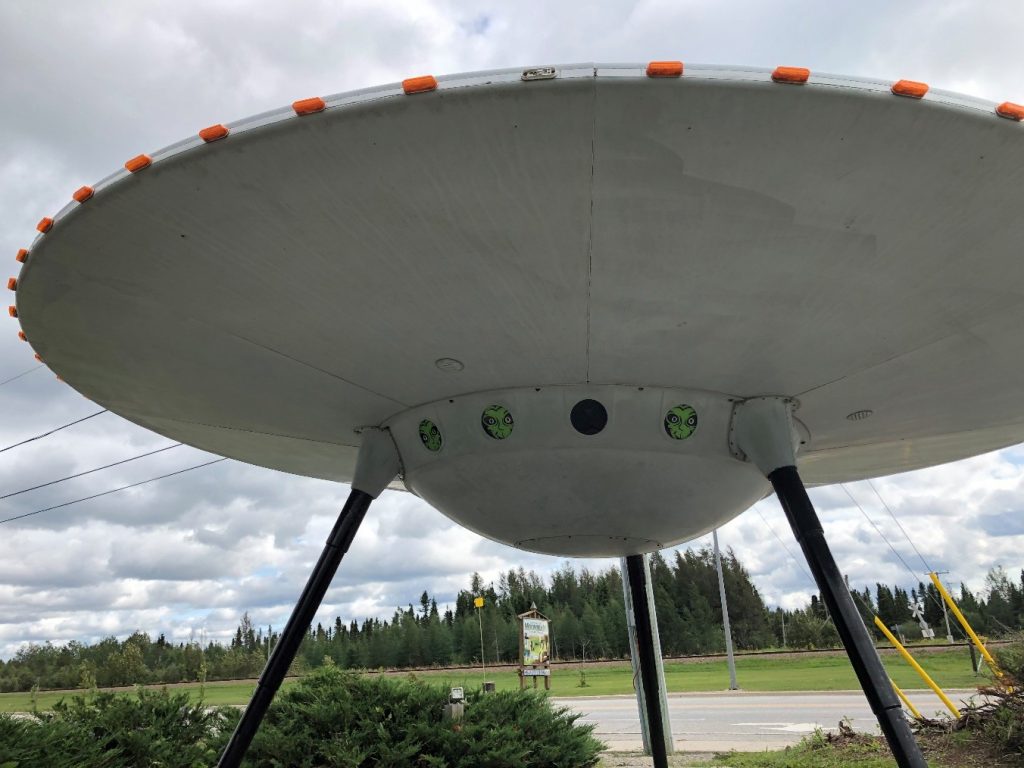
That’s right, at the tourist information centre on the corner is a UFO, complete with little green men looking out the portholes — an obvious selfie spot.
~
Planning a visit?
René Brunelle Provincial Park lies just north of Highway 11 near Moonbeam and Kapuskasing.
The park is part of the Ontario Parks Boreal Driving Route, connecting a number of northern parks together for the ultimate northern road trip.
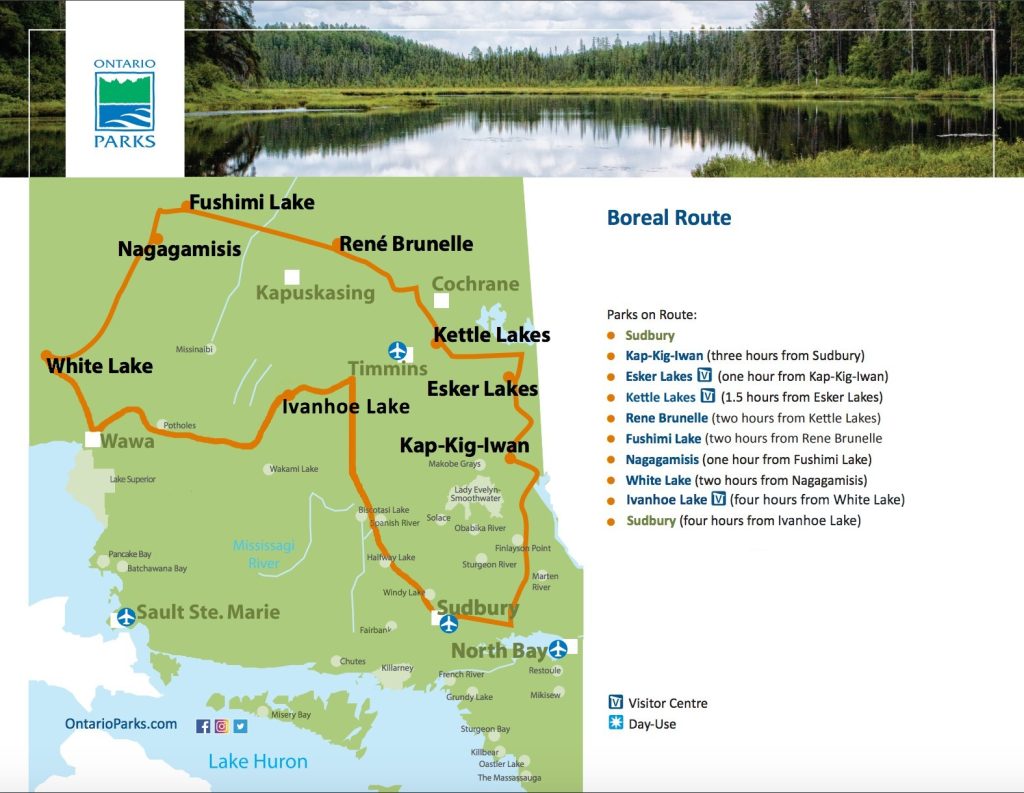
Rene Brunelle’s campgrounds offer electrical and non-electrical campsites. A comfort station with flush toilets and hot showers is located centrally in the park.
Various types of watercraft and bikes are available to rent.
René Brunelle is open until October 14, 2025.
~


